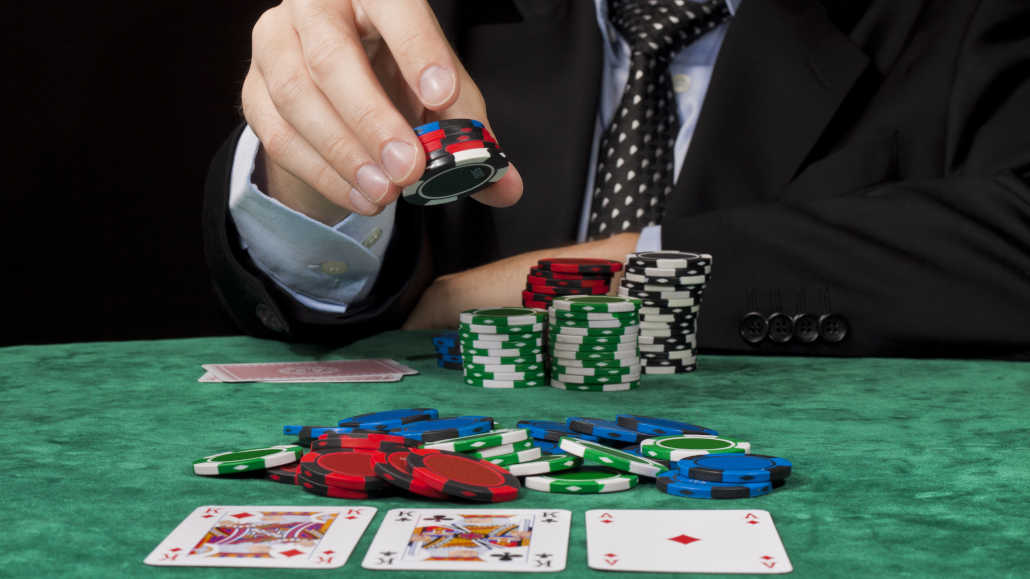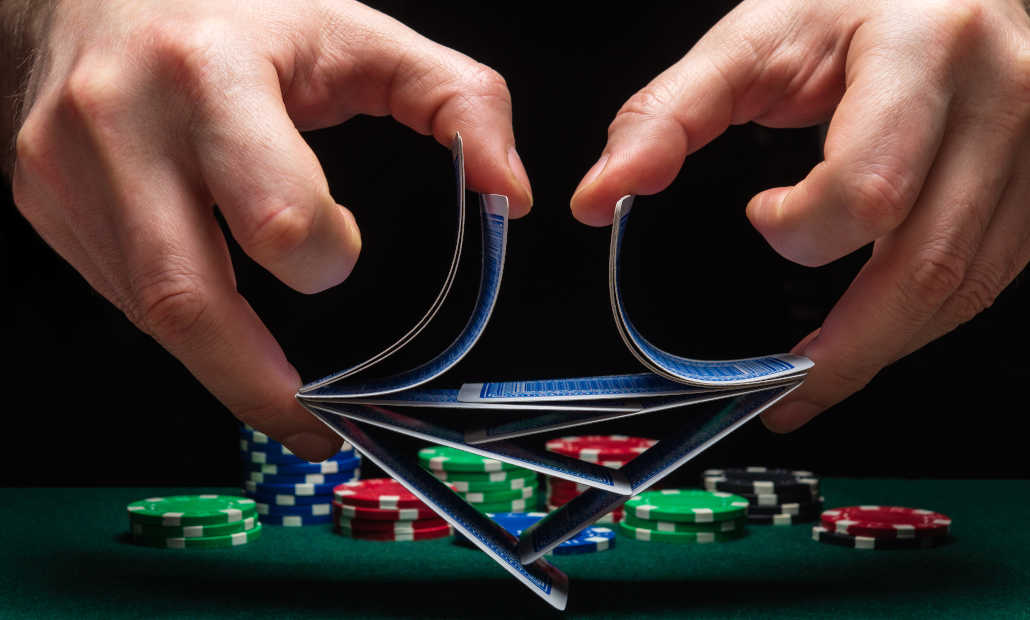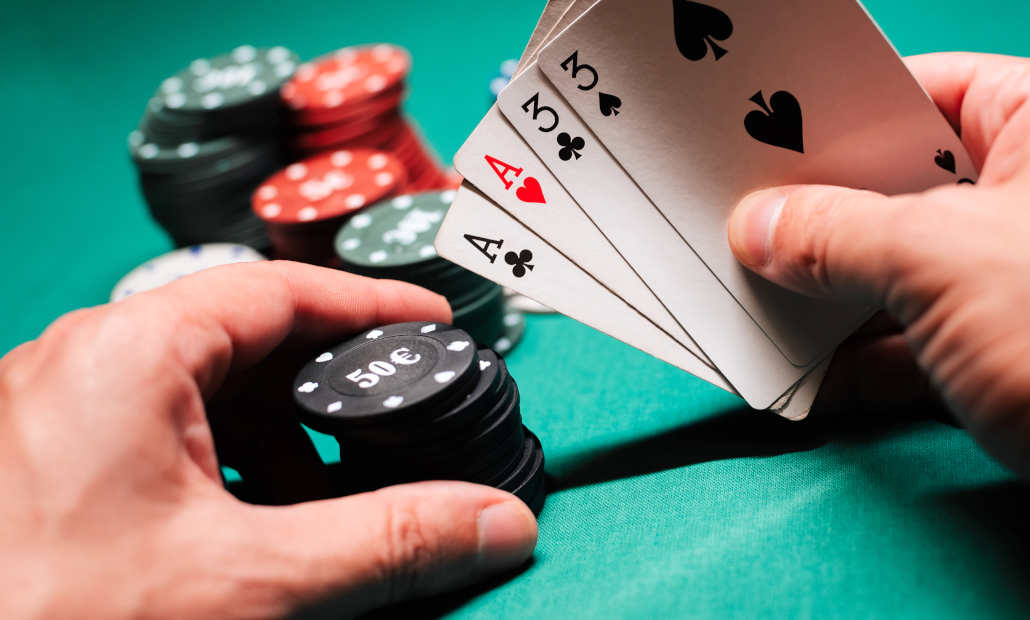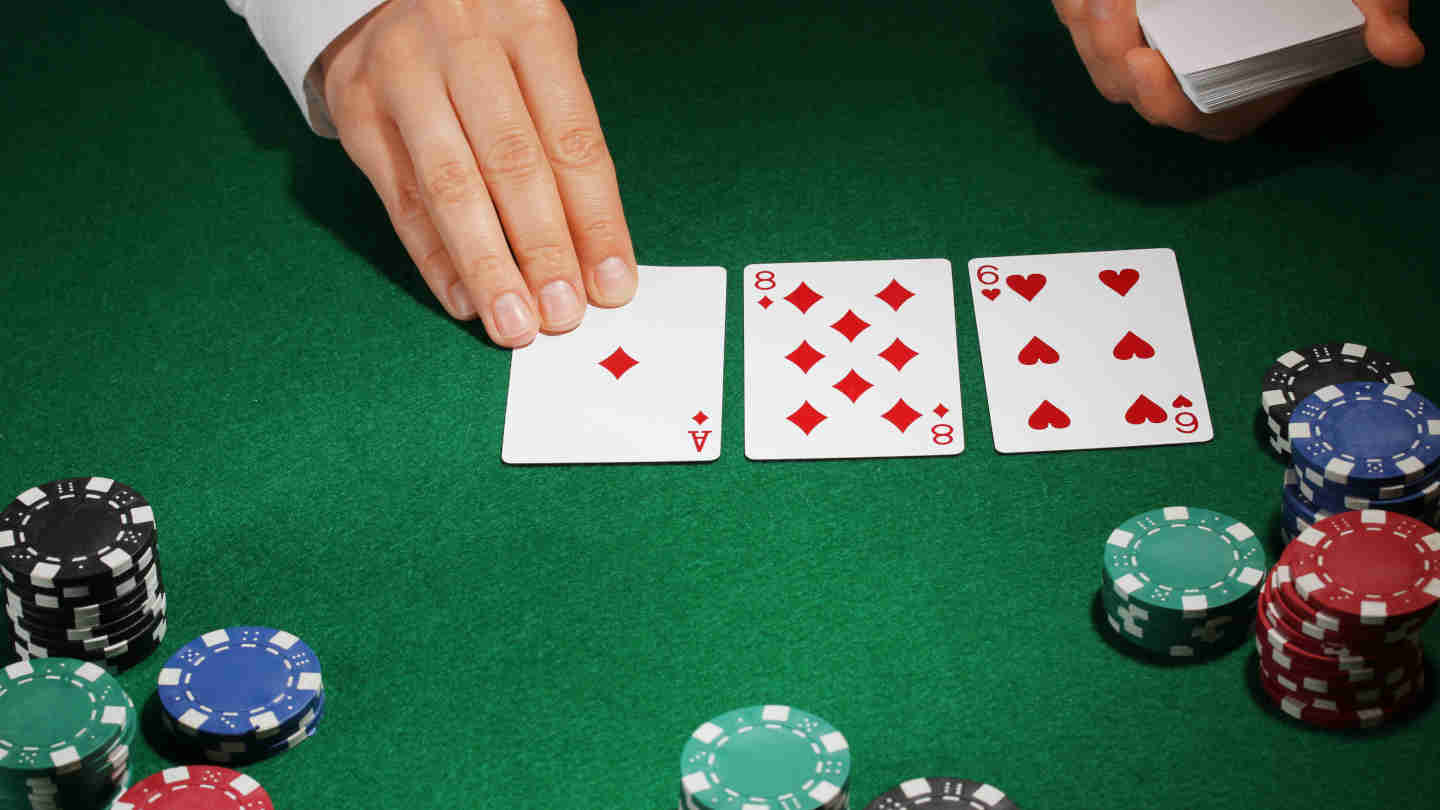Poker Betting Rules – Learn How to Bet in Poker the Right Way

10 minutes
Betting in poker is an essential part of the game. Thus, it’s important to understand the different types of bets and when to use them.
In this article, we break down poker betting rules and everything you need to know about betting in poker.
Poker Betting Rules – The Blinds
In poker, the blinds are forced bets. These bets are posted before each hand by the two players seated to the left of the dealer button.
The purpose of the blind bets is to create a pot in which the players will compete and to encourage them to play more poker hands.
Poker has two types of blinds: the small blind and the big blind. The small blind is typically half the size of the big blind, and the stakes of the game determine the size of the blinds.
For example, in a $2/$5 No Limit Hold’em game, the small blind would be $2 and the big blind would be $5.
It is also important to note that in some poker games apart from the blinds, players are also forced to place antes. The ante bet is posted by all players participating in the game.
Poker Betting Rules – Preflop Betting

After the small blind and the big blind post their bets, the dealer deals two cards turned face down to each player at the table and the action begins with the player on the direct left of the big blind, also known as Under The Gun.
The UTG player has three possible options:
- He can call (match the size of the big blind bet)
- He can raise (increase the size of the big blind bet)
- Or, he can fold (discard his cards and withdraw from the hand)
After the UTG player has made his decision, the action proceeds around the table in a clockwise direction until it reaches the player in the big blind.
The player in the big blind also has three options:
- He can raise (increase the size of the previous bet)
- He can check (remain in the hand without betting)
- Or, he can fold
Note that big blind has the option to check (as he has already put in a bet equal to the size of the big blind) only if none of the players that acted before him made a raise.
Poker Betting Rules – Postflop Betting
Once the preflop betting round is completed, the dealer deals the flop – three community cards turned face up, and the flop betting round begins.
The flop betting round begins with the first active player on the left of the dealer button. This betting round continues until one of the following scenarios happens:
- All bets are matched
- All players have checked
- All players but one have folded
- Two or more players have gone all-in
Cash Game Buy-ins And Tournament Buy-ins in Poker

There are two main types of poker formats: cash games and tournaments. The buy-in for each of them varies and has its own unique rules and regulations.
Buy-ins in Cash Games
In poker cash games, players buy-in for a certain amount of money and they receive poker chips that have the same monetary value.
There is no set end time for a cash game. Players can buy more chips or leave the game and exchange their chips for real money anytime.
The buy-in for a cash game depends on the stakes and can range from 20 big blinds to 1,000 big blinds. For most online cash games, the standard buy-in amount is 100 big blinds, while the cash games in casinos are often played with 200 big blinds or more.
Buy-ins in Poker Tournaments
To play in poker tournaments, players are required to pay a set buy-in fee to receive a certain number of tournament chips. Poker tournaments have a set starting time and they continue until one player is left with all the chips.
Buy-ins for tournaments depend on the size of the field, the tournament guarantee, and the venue.
Because online poker tournaments are easier to organize and there are no additional expenses for the host, they tend to have much lower buy-ins than tournaments that take place in casinos.
For example, the most popular poker tournament in the world, the World Series of Poker Main Event, takes place in a brick-and-mortar casino and the buy-in for this event is $10,000.
In addition to the buy-in, poker tournament hosts also charge a fee for organizing the event. Usually, the fee for poker tournaments is less than 15% of the buy-in amount.
Cards in Poker

Poker is usually played with the standard 52-card deck, and during the game, two main terms are used for cards depending on how the players can use them.
The term “hole cards” refers to the cards that are dealt face down to each player at the beginning of a hand. These cards can only be seen by the player.
The number of hole cards that the player receives depends on the poker variant he is playing.
For example, in Texas Hold’em, each player is dealt two hole cards, while in Omaha, each player receives four hole cards.
The term “community cards” refers to the cards that are dealt face up on the table during a hand, which are to be shared by all players. These can be used in combination with each player’s hole cards to create the best possible hand then can.
The number of community cards dealt also depends on the poker variant.
For example, in Texas Hold’em, the dealer can deal with up to five community cards, while in some variants, like the Seven-card Stud, there are no community cards.
Types of Pots in Poker
Depending on the format, five common types of pots can be formed during a poker hand:
- Main pot: this pot includes all the bets made by players who have at some point participated in the hand.
- Side pot: the side pot is created when one or more players go all-in, and there is still betting action left between the remaining players. The all-in player can’t win more chips than he contributed to the pot, so the remaining players that are still in the hand continue with the action and create a separate pot.
- Split pot: the split pot occurs when two or more players have combinations of equal value at the end of the hand. In these situations the pot is divided equally between these players
- Dead pot: a dead pot does not happen often. It is a pot that is created when a player folds or is forced to leave the hand before the action comes to him. This pot included the bets made by that player before he left the game and is available only to the players that remain in the hand
- Capped pot: some variations of the game have a cap on the number of bets or raises that can be made in a single round of betting. When this limit is reached, the pot is considered “capped” and players are not allowed to make any more bets.
Betting Amounts & the Number of Raises in Poker

In poker, the betting amounts and the number of raises that players can make depend on the game’s betting structures.
Based on the betting structure, there are three main types of poker games:
- No-Limit
- Pot-Limit
- Fixed-Limit
No-Limit Poker Games
In no-limit poker games, the players can bet any amount of chips they have in their stack at any time. There is no cap on the maximum bet.
Furthermore, in these games, players can make as many raises as they want as long as they have enough chips to cover the bet they are making.
The most popular no-limit poker game is Texas Hold’em. In this poker variant each player gets two hole cards and the dealer can deal with up to five community cards.
The object of the games is to put together the best possible five-card combination using your hole cards and the community cards.
Example of a No-Limit Hold’em Poker Hand
If we take a $5/$10 six-handed no-limit poker hand without antes, here is how some of the betting patterns might look.
Before the hand starts, the small blind will post $5 and the big blind will post $10. After the cards are dealt, the action starts with the UTG player. As we’ve mentioned before, this player has three available options: he can call, raise or fold.
If he decides to call, he must put in $10, or, in other words, match the biggest bet on the table which, at the moment, is the big blind’s bet.
But if he decides to raise, he can raise as much as he wants. He is only limited by the size of his stack. So, if he has $2,000 in front of him, he can raise to $2,000, which is known as going all-in.
For the sake of the example, let’s say that he raises $22. Now with this raise, the UTG player has placed the biggest bet at the table, which means that all other players at the table must pay at least $22 if they want to continue with their hand.
They can also make a raise to whatever amount they want or fold.
All players fold and the action is on the big blind. Now, since the big blind has already invested $10 into the pot, he only needs to add $12 more if he wants to make a call. Of course, he also has the options to raise to as much as he wants or fold.
Pot-Limit Poker Games

Games using a pot limit structure allow players to bet only up to the size of the pot, and the number of raises is usually not limited but depends on the format.
Pot-limit Omaha is the most popular pot-limit poker game, in this variant, each player receives four hole cards and the dealer can deal up to five community cards.
The object of the game is to put together the best possible five-card combination using both your hole cards and three community cards.
Example of a Pot-Limit Poker Hand
If we take a $2/$5 six-handed pot-limit poker hand without antes, here is how some of the betting patterns might look.
Before the hand starts, the small blind will post $2 and the big blind will post $5. After the cards are dealt, the action starts with the UTG player and he has three available options.
Now, unlike no-limit games, pot-limit games have a limit on how much the player can bet. In this situation, the UTG player can only place a pot-sized bet if he wants to raise it.
To figure out how much a pot-size is in this situation, you can use the following formula:
Multiply the latest bet (big blind’s $5) by three and add that number to the amount of money that was in the pot before the last bet was made (small blind’s $2).
- 5 x 3 + 2 = 15 + 2 = 17
In this situation, the maximum amount that the UTG player can bet is $17.
Now let’s say that the action is folded to the BB and he wants to make a maximum raise. In this situation we again need to multiply the last bet ($17) by 3 and then add the money that was in the pot before the last bet to figure out what is the maximum bet the BB can make.
- 17 x 3 + (5 + 2) = 51 + 7 = 58
The maximum amount of money that the BB can bet is $58.
Fixed-Limit Poker Games
In fixed-limit poker games, there is a set limit to the amount that players can bet or raise during each betting round. The number of raises is typically capped at three per betting round
For example, in a $2/$4 fixed limit game, the players can only bet or raise in increments of $2 during the first two betting rounds, and in increments of 4$ during the two final betting rounds.
When it comes to fixed-limit poker games, fixed-limit Texas Hold’em is by far the most popular game. In this game, the goal is the same as in No-limit Hold’em. The only difference is the betting structure.
Example of a Fixed-Limit Poker Hand
Let’s take a $2/$4 Texas Hold’em limit game as an example. Before the hand starts the SB posts $1 and the BB posts $2. The dealer deals the cards, and now the action is on the UTG player.
Like always, the UTG player has three options: to raise, fold or call. If he decides to raise.
He can only raise the BB bet by $2 since this is the first round of betting and the size of the small bet is $2, which means that he needs to put $4 in the pot (BB’s bet is $2 + the small bet is $2).
The action folds to the player on the button. Now, to calculate how much he can raise, we need to add the size of the small bet ($2) to the last made bet ($4) which means that the button can put a maximum bet of $6.
This same betting structure is applied in the flop betting round, while in the turn and river betting rounds, the maximum raise goes up to $4 with a $16 cap.
- Poker Squeeze Play – Which Hands Make the Most Sense for Squeezing? - August 10, 2023
- How to Play Low Pocket Pairs in Texas Hold’em - July 29, 2023
- How to Make Deep Runs in MTTs More Often - July 22, 2023















